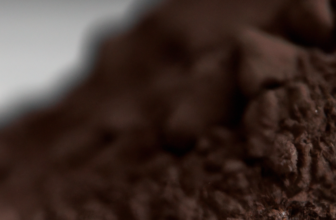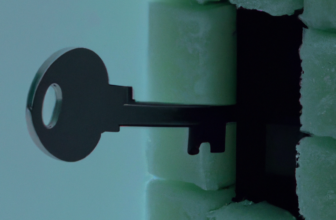How Fenofibrate helps treat Diabetic Eye Disease
How Fenofibrate Can Help Treat Diabetic Eye Disease
Diabetic eye disease, also known as diabetic retinopathy, is a common complication of diabetes that can lead to vision loss and blindness. It is caused by changes in the blood vessels of the retina, the light-sensitive tissue at the back of the eye. Fortunately, there are treatments available to help slow the progression of the disease and prevent vision loss. One such treatment is the use of fenofibrate, a medication that helps to reduce cholesterol levels and triglycerides in the blood.
Fenofibrate works by increasing the activity of an enzyme called lipoprotein lipase, which helps to break down fats in the blood. This helps to reduce the levels of triglycerides and cholesterol, which can help to reduce the risk of developing diabetic eye disease. Studies have shown that fenofibrate can reduce the risk of developing diabetic retinopathy by up to 40%.
In addition to reducing the risk of developing diabetic eye disease, fenofibrate can also help to slow the progression of the disease in those who already have it. Studies have shown that fenofibrate can reduce the risk of vision loss by up to 50%. It can also help to reduce the risk of developing macular edema, a condition in which fluid accumulates in the macula, the part of the eye responsible for sharp, central vision.
Fenofibrate is generally well-tolerated and has few side effects. However, it is important to talk to your doctor before starting any new medication, as it may interact with other medications or medical conditions. It is also important to follow your doctor’s instructions for taking the medication and to have regular eye exams to monitor your progress.
In conclusion, fenofibrate can be an effective treatment for diabetic eye disease. It can help to reduce the risk of developing the disease and can also help to slow its progression in those who already have it. However, it is important to talk to your doctor before starting any new medication and to follow their instructions for taking it.
The Benefits of Fenofibrate for Diabetic Eye Disease Patients
Diabetic eye disease is a serious condition that can lead to vision loss and blindness. Fortunately, there are treatments available to help manage the condition and reduce the risk of vision loss. One such treatment is the use of fenofibrate, a medication that has been shown to be effective in reducing the risk of vision loss in diabetic eye disease patients.
Fenofibrate is a type of medication known as a fibrate. It works by reducing the amount of triglycerides and low-density lipoprotein (LDL) cholesterol in the blood. High levels of these substances can contribute to the development of diabetic eye disease. By reducing their levels, fenofibrate can help to reduce the risk of vision loss.
In addition to reducing the risk of vision loss, fenofibrate has also been shown to improve the overall health of diabetic eye disease patients. Studies have shown that fenofibrate can reduce the risk of stroke, heart attack, and other cardiovascular events in these patients. It can also help to reduce inflammation, which can help to reduce the risk of complications from diabetic eye disease.
Fenofibrate is generally well-tolerated and has few side effects. The most common side effects are nausea, diarrhea, and abdominal pain. These side effects are usually mild and do not last long. In rare cases, more serious side effects such as liver damage or muscle pain may occur.
Overall, fenofibrate is a safe and effective treatment for diabetic eye disease. It can help to reduce the risk of vision loss and improve the overall health of patients. It is important to talk to your doctor before starting any new medication, including fenofibrate, to make sure it is the right choice for you.
Exploring the Latest Research on Fenofibrate and Diabetic Eye Disease Treatment
Diabetic eye disease is a serious complication of diabetes that can lead to vision loss and blindness. Fortunately, recent research has shown that fenofibrate, a cholesterol-lowering medication, may be an effective treatment for diabetic eye disease.
Fenofibrate is a type of fibrate, a class of drugs that are used to lower cholesterol levels. It works by increasing the activity of an enzyme called lipoprotein lipase, which helps break down fats in the bloodstream. In addition to lowering cholesterol, fenofibrate has been found to have anti-inflammatory and antioxidant properties, which may be beneficial in treating diabetic eye disease.
A recent study published in the journal Ophthalmology investigated the effects of fenofibrate on diabetic retinopathy, a common complication of diabetes that can lead to vision loss. The study included over 1,000 patients with diabetes and found that those who took fenofibrate had a significantly lower risk of developing diabetic retinopathy than those who did not take the medication.
Another study published in the journal Diabetes Care looked at the effects of fenofibrate on diabetic macular edema, a condition that can cause vision loss. The study included over 1,500 patients with diabetes and found that those who took fenofibrate had a significantly lower risk of developing diabetic macular edema than those who did not take the medication.
These studies suggest that fenofibrate may be an effective treatment for diabetic eye disease. However, more research is needed to confirm these findings and to determine the optimal dosage and duration of treatment.
In conclusion, recent research has shown that fenofibrate may be an effective treatment for diabetic eye disease. While more research is needed to confirm these findings, the results of these studies are promising and suggest that fenofibrate may be a safe and effective treatment option for those with diabetes.







